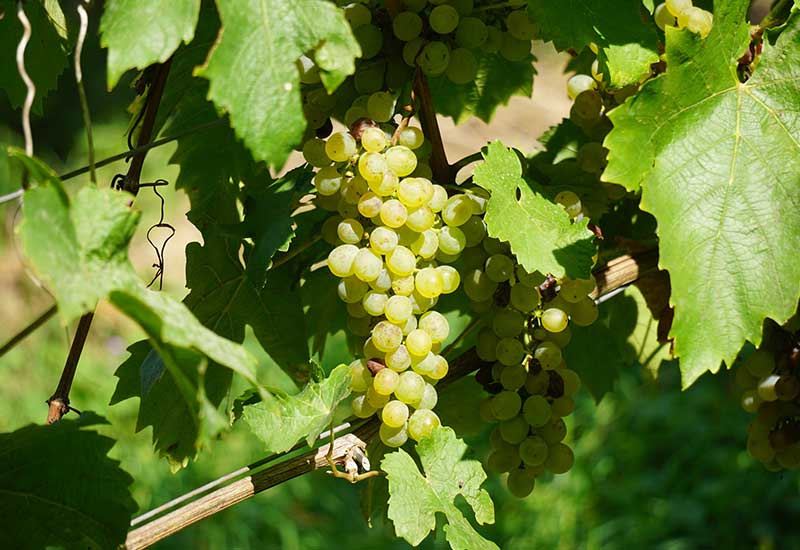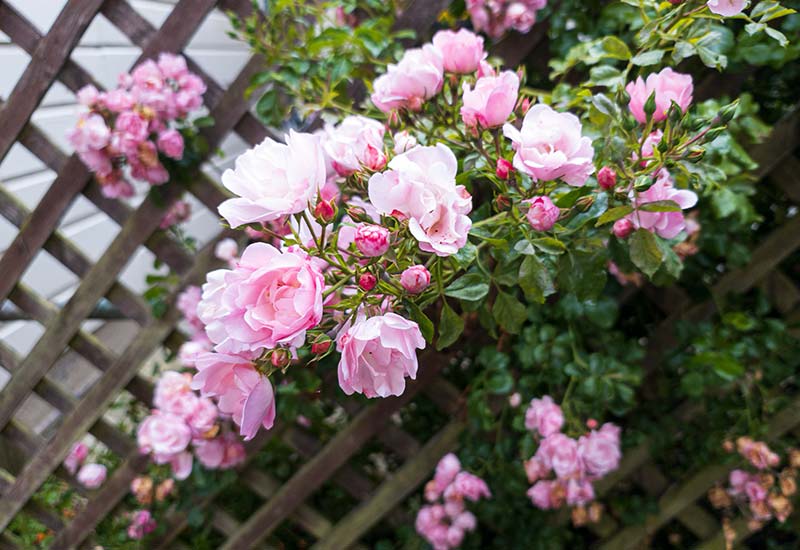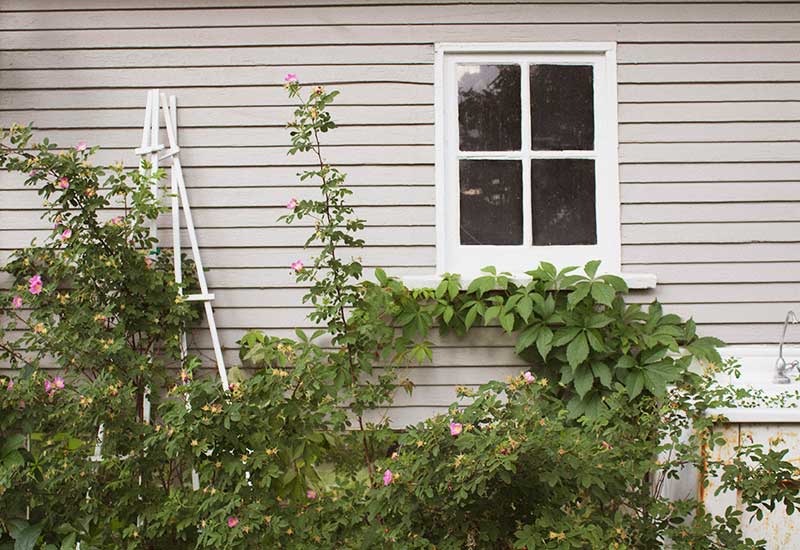You want to have your garden house overgrown and know which climbing plants are particularly suitable? Then you are absolutely right here!
A green roof is, of course, a great way to protect the environment. make your own garden a little more sustainable and breathe species-rich life into it. The walls of your hut can also be greened with simple means, creating not only a picturesque sight, but also a new habitat for birds and insects.
In this article I would like to introduce you to the best self-climbers and scaffold climbers from the plant world, which are wonderfully suitable as facade greenery of your garden hut. In addition, you will receive valuable tips and finally learn which climbing plant you should rather do without. Let's go!
1. vines

How about planting your arbor with wild grapevines (you get here*) and a special one, mediterranean flair produce? I'm planning to do that on my own garden shed at least, as the vines grow very well on wooden beams, environmentally friendly are and as Shade giver and as Food source serve.
In any case, it is important that around your garden hut. sufficient floor area free lets to plant the vines there. With Vine aids made of metal or wood, you then make sure that they pave the way for themselves.
Tip: If you would like to see your garden shed "green" all year round, there are also evergreen varieties, such as the Armand's clematis*. However, it is not native to Germany and is therefore less species-friendly.
2. blackberry
It is also important to choose climbing plants that are no damage to the wood or on building facades in general. These also include another climbing plant, the wild blackberry, which you can here at the Horstmann nursery* get.
It is a member of the spreading climbers, grows very luxuriantly and regularly produces fresh plants, edible fruits from your own garden. It is also extremely valuable for countless species of birds, hoverflies, caterpillars and wild bees.
3. ivy
Wild ivy (you get here*) is a living space, privacy screen, wall decoration, humidifier and air purifier all in one. It is also Extremely undemanding, grows even in shady places and is beautiful green even in winter.
Its reputation has suffered somewhat because the many adhesive feet are said to damage the façade. Of course, the Glaze on the wood The (hard) wood itself, however, is rarely affected.
And that is why the root-climbing ivy is also very well suited, if you want to let your garden house overgrown.
Additional Tip: Did you know that you can from ivy leaves also make great dishwashing liquid can? I'll be happy to show you how it works in the linked post!
4. climbing hydrangea
The popular climbing hydrangea (Hydrangea petiolaris) belongs to the Root-climbing self-climberswhich clings to solid walls or fences with its adhesive roots. Although it sheds its leaves in winter, it gives every garden shed a particularly attractive appearance until then. colorful overall picture.
A small downer: the climbing hydrangea originates from the Far East and is therefore not native to Germany. As a result, bees and other garden animals unfortunately - and quite literally - do not fly to the plant.
5. climbing roses

Climbing rose is a spreader climber and provides not only greenery, but also colorful, flowering walls in the garden. Especially good are the rambler roses, because they are very fast growing and extremely robust and easy to care for are.
I personally prefer wild roses, like the Dog Rose (is available here*) because it is extremely insect-friendly and can also be used in a Bird friendly garden fits
Either way, you should definitely protect the plant with a climbing aid support.
6. espalier fruit
Trellis fruit refers to fruit trees that are aligned and attached to a framework. They are particularly suitable for those who do not have quite so much space in the garden, as Apple, pear, sour cherry and so many more -trees (you can find them all here*) grow flat along the wall.
This not only looks very good, but also delivers the following at regular intervals delicious fruit. This is certainly not an unimportant reason to have your garden shed covered with it.
Above all, however, fruit trees with their beautiful blossoms are Real insect magnets. And birds and other garden animals also help themselves to their fruit.
However, I would like to mention that the espalier fruit also has the corresponding Expertise and care needed.
7. honeysuckle
Fast-growing climbing plants such as forest honeysuckle (also known as German honeysuckle) are also extremely wall-friendly; is available here*). You can hang the insect-friendly native plant on the wall of your garden shed. simply cut back, if it spreads too rapidly and extensively.
In terms of water requirements and location, the honeysuckle is Relatively demanding, but the blooms and fragrance in your garden help make this effort worthwhile.
8th Akebie
A really low-maintenance Climbing plant is the akebia. Its climbing shoots grow upwards in an upright position and its pink flowers give every garden shed a special charm.
If you create ideal conditions and plant it on relatively wind-protected walls, the climbing plant will give you a lot of pleasure. However, this does not apply to the insect world, as the Akebie from the tropical regions originates.
9. blue rain
If you want your garden house to be overgrown, climbing plants such as the blue vine should also help you. The really bright blue and pleasantly fragrant flowers make any wall a real eye-catcher and come out especially in full sunny places.
The blue-green rain is also found in many gardens because it is flowery, healthy and fast growing is. So fast that it can become very heavy, so ideally the climbing aid is firmly attached to the wooden wall of your garden shed.
Helping to combat species extinction unfortunately not, as it is not native to Germany, and no ecological added value has.
10. common clematis
The common clematis (is available here*) does not provide edible food, but is extremely wild bee friendly and produces a beautiful, Green overall picture the garden shed.
The plant can climb up to 10 meters high. A small climbing aid you should still offer her. By attaching guide cords, you can then steer her the way you want.
Have your garden shed overgrown? No problem!

Each climbing plant has its own requirements. So when making your choice, also take into account location factors such as sun, wind and water and generally the Plant needs.
Use climbing aids so that ivy, dog rose and the like don't have such a hard time growing where you want them to. To avoid damaging the wall of your garden shed, you should also It is better to avoid aggressive climbing plants such as knotweed.
"The trees, the shrubs, the plants are the ornament and the garment of the earth."
Jean-Jacques Rousseau (more at Garden Quotes)
I hope this article helps you green your garden shed. Do you have any questions, suggestions or further tips? Then I look forward to your comments.
Stay environmentally friendly,

PS: By having a greener garden, you are helping, among other things, to Stop insect mortality. What else you can do for the protection of the little animals, you will learn in the linked article.




